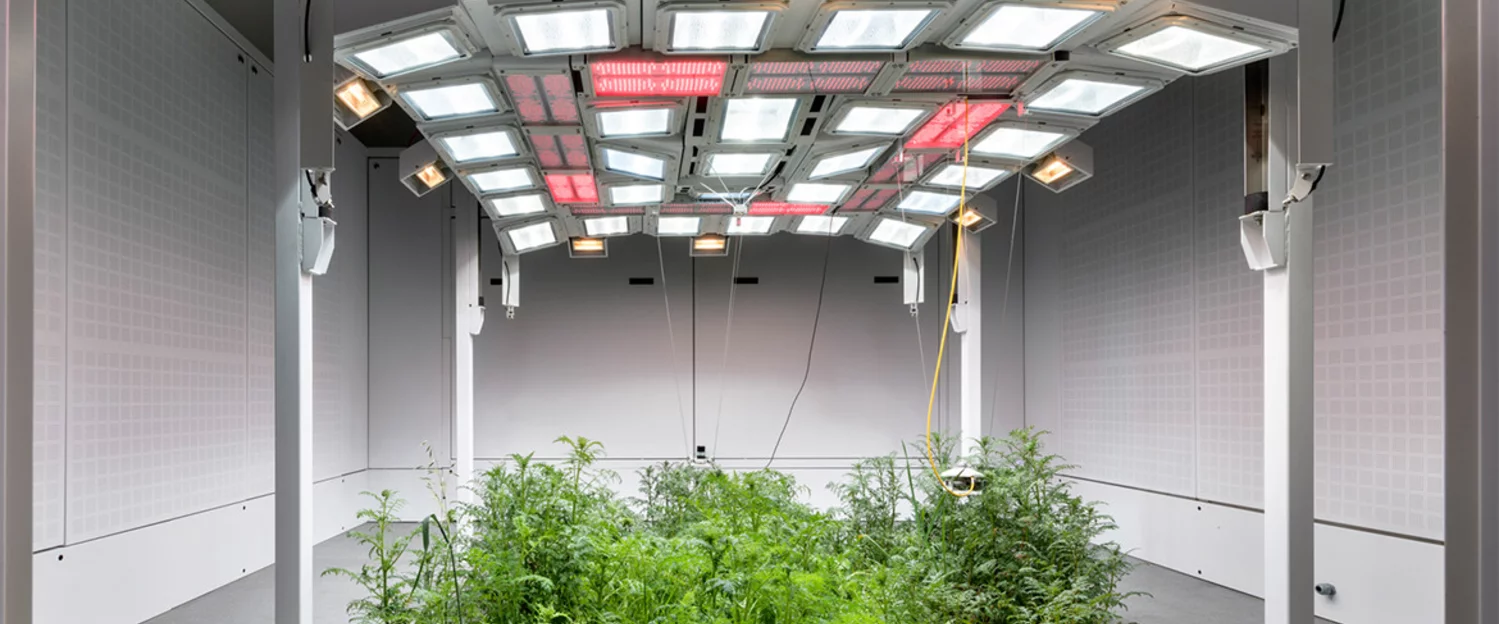The Faculty of Gembloux Agro-Bio Tech at the University of Liège
Climate chambers for international research project on agroecosystems
The climate is changing and so are the conditions for the cultivation of food crops. The international research project “Environment is Life” is investigating the impact of climate change on the performance of agroecosystems. In the Ecotron, a system with a total of six climate chambers, the environmental conditions for complete ecosystems - plants, animals and soil - are simulated. weisstechnik® designed and built the chambers according to demanding specifications. An important component is the lighting system, which almost exactly reproduces the sunlight spectrum.
A globally unique research facility
The Gembloux Ecotron was built by the University of Liège in order to research agroecosystems in their entirety under controlled climate conditions. It consists of six identical climate chambers with ecosystem samples. These samples are made up of agricultural crops, weeds, insects, microorganisms and soil, and were all taken from an open field. In the Ecotron, these macroecosystems continue to develop in earth containers, so-called lysimeters. The lysimeters are located one floor below the climate chambers and are connected with the testing area via cut-outs in the climate chambers’ floors. Current environmental conditions as well as conditions that can be expected in the future are simulated in the climate chambers. The focus is on the dynamics of plant growth in interaction with environmental growth factors as well as biotic and abiotic stress.
Climate control system with chamber construction spanning three floors
The Ecotron building was specially constructed for the project and therefore it could be ideally adapted to the requirements of the air-conditioning technology in advance. Each research unit spans three floors: The air-conditioned lysimeter is located on the lowest level. These earth containers are 1.5 m high, have a diameter of 1.63 m and weigh 5,700 kg. They form an airtight and watertight unit with the climate chambers that is located on the middle level and in which the plants grow. The upper level is the technical equipment area, in which the air-conditioning units and control systems are installed.
Complete air-conditioning solution from a single source
weisstechnik®, the reliable air-conditioning technology partner, was commissioned to design, construct and install the climate chambers. The brief also included the bespoke monitoring and control software as well as the central cooling and ventilation systems. Temperature, air humidity, airspeed, concentration of carbon dioxide and ozone, irrigation and light irradiation can be controlled with precision in the climate chambers. At the same time, it was a particular challenge to dissipate the heat load of the powerful lighting system without it impacting the tests. The air-conditioning system achieves temperatures of 4°C to 40°C and has an air replacement rate of up to 200 m³/h. At the same time, it is possible to simulate up to 40 rainfalls per day, with a rain volume of between 0.2 and 7 l. With a maximum temperature deviation of just +/- 1°K and a maximum relevant humidity deviation of ± 5% rF, the strict specifications are reliably observed.
Ideal light conditions for photosynthesis
A crucial factor for the success of the project is simulating sunlight. The lighting system must produce a light spectrum that is as similar as possible to natural sunlight and that includes the ultraviolet light, dark red light and visible light that comprise the irradiation range that is crucial for photosynthesis. The lighting solution deployed by weisstechnik combines three different light sources. The main light sources are powerful plasma lamps (LEP), which cover the visible light spectrum and the UV range. They are supplemented by tungsten halogen lamps for the infra-red range and also LED lamps for the red (660 nm) and dark red (730 nm) ranges. The light intensity can be set between 200 and 1,200 µmol/m-2/s -1 at a meter’s distance. The developed lighting system simulates the irradiation homogeneity and the natural light spectrum with a deviation of less than 10% from the nominal value, which natural sunlight provides. It can be reliably achieved at any time and in all locations within the climate chamber.
Test series successfully started
Since August 2018, scientists in the Gembloux Ecotron have been carrying out the first long-term experiments. Until summer 2019, they will be testing the cultivation of phacelia as a catch crop and winter wheat as the main crop in two different climates: the previous climate from 1980 to 2010 and the predicated climate for 2040 to 2070.
(4,799 characters incl. spaces)
For more information, see www.weiss-technik.com
May be reprinted free of charge. Please specify “Weiss Technik companies” as the source.
Schunk Group
The Schunk Group is a globally operating technology company with a global business unit structure. The company is a leading supplier of products made of high-tech materials – such as carbon, technical ceramics and sintered metal – as well as machines and systems – from environmental simulation and air conditioning to ultrasonic welding and optical machines. The Schunk Group has more than 8,500 employees in 29 countries and achieved sales of €1.28 billion in 2018.

